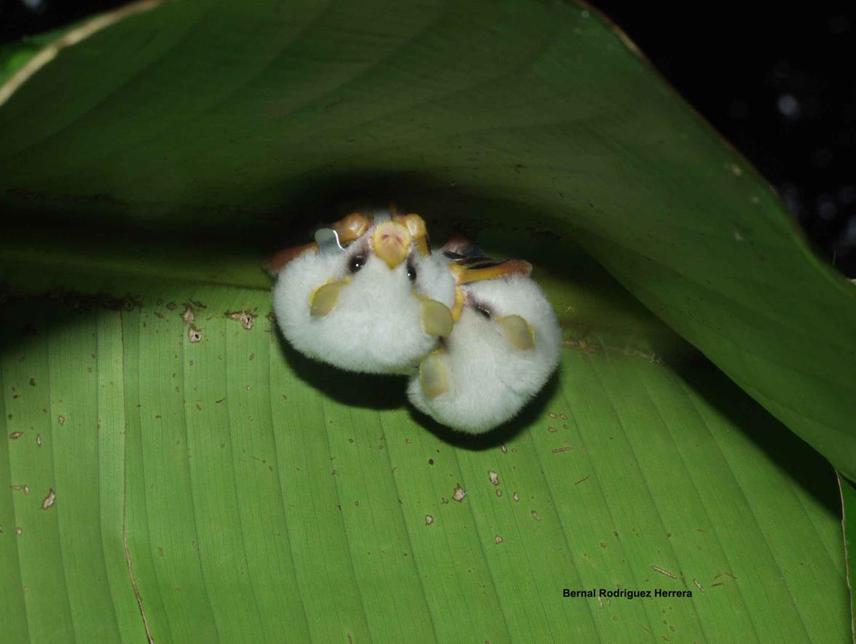Bernal Rodriguez Herrera
Why do bats modify plant leaves as “tents” to use as roosts? And who builds the tent?

Costa Rica is a biologically highly diverse, among the 20 World megadiverse countries for holding at least 5% of the Earth living species in a small area (0.03% of the World´s land), which represents among the highest species densities in the world. Unfortunately, in less than 50 years, the forest cover in Costa Rica has diminished from 80 to 20%, mostly caused by deforestation due to agriculture and cattle raising. Because of this, the tropical rain and premontane forests have almost been eliminated from the country. One of the most threatened mammal group in Costa Rica are bats. Because of this, it is a top priority to learn more about its basic biology, including its mating system and roosts.
Because of its restricted distribution, Ectophylla alba depends on a few species of plants for roosting and feeding ecology, and given the scarce information available concerning its biology, it is considered as a species that holds a special conservation status. Information about its biology and reproductive system, therefore, is necessary to understand the real conservation status of the species and, if it is necessary to prepare management and recovery plans, and to adopt adequate conservation measures.
Why do bats modify plant leaves as “tents” to use as roosts? And who builds the tent? It is thought that tents provide protection from the rain, temperature, predation, and parasitism, and they are used by 21 species of bats throughout the world. However, so far there has been only one observation of the actual process of construction of the tent, by a male individual of an Old World species. Therefore, the general hypothesis is that males build the tents and defend them as a resource, which determines their access to the females. I will study the mating system in the white bat Ectophylla alba. This is a species with a very small distribution range (lowlands of Honduras, Nicaragua, Costa Rica, and the north of Panama) and it is locally rare everywhere. It is one of the 17 Neotropical species that makes use of “tents” as day roosts, mainly out of Heliconia leaves.